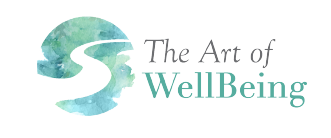The Way of Transition: Embracing Life’s Most Difficult Moments
This week, as I experienced yet another death in my family, I was reminded of the work of consultant and author, William Bridges.
In his memoir to make meaning of his wife’s death from cancer, Bridges offers insightful and practical suggestions for navigating life’s inevitable transitions. He describes three primary movements in the process of transition: 1) letting go of the old, 2) accepting the chaos and uncertainty of what he calls “the neutral zone” (wilderness, liminal space), and 3) welcoming an emergent new beginning. Transition is an inescapable part of human existence. And Bridges asserts that this pattern from crisis to wilderness to renewal is ubiquitous and sacred.
More than that, crisis and loss create a doorway or threshold in our lives for renewal and transformation. “These points of access are like spiritual doorways through which one could ‘cross over,’ sometimes unaware, into a whole different way of seeing and understanding the world. Tribal groups often located these doorways in specific geographical places that they considered to be holy places…but all of these places are simply the physical symbols of—or images that evoke, or triggering mechanisms for—what is a natural state of mind… And it is that state of mind that we are most likely to encounter in a neutral zone.”
He writes of an ancient truth that I sometimes forget (and often try to avoid): “…that renewal comes neither by taking a rest nor changing the scenery, nor by adding something new to our lives, but by ending whatever is, and then entering a temporary state of chaos when everything is up for grabs, and anything is possible. Then—but only then—can we come out of what is really a death-and-rebirth process with a new identity, a new sense of purpose, and a new store of life energy. [1]
According to Bridges, every creative opportunity for authentication and reorientation presents itself to us in the form of chaos or the empty field or the fallow time (which he calls “the neutral zone”). Richard Rohr writes of the powerful possibilities of liminal space; Walter Bruggeman of the necessity of disorientation before reorientation. The biblical story teaches that chaos precedes new creation. And grief—that most uncomfortable doorway—is essential for deep healing.
The death of Aunt Patsy—last of my father’s siblings—has done for me what losses often do: triggered the whole bushel basket of what has not yet been fully grieved.
I don’t like it. I never do. At first, I always feel worthless and unproductive and ashamed. It usually takes me a minute to remember the Velveteen Rabbit. And the words of Sister Dorez, 80-year-old retreat director, who once told me: “I believe it is difficult to become real without suffering.”
And so, I sit here on this gray February day, and I let myself be sad. I allow my grief to work its alchemy. I entrust myself to the divinely ordered rhythm of renewal and give thanks for the resilience which is the gift.
Walking with you,
Vicki
[1] Bridges. The Way of Transition: Embracing Life’s Most Difficult Moments, pp. 40-42
